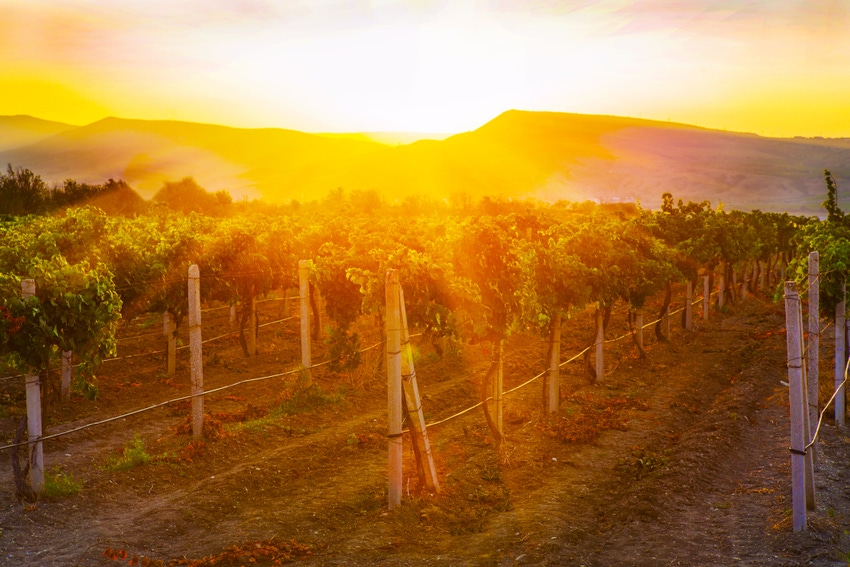
A number of grape growers and other crop producers commonly equate a healthy soil with good biological activity. That’s a soil that features the appropriate types and populations of soil organisms, ranging from bacteria and fungi to earthworms, that cycle nutrients, improve soil structure, control diseases and enhance plant growth.
While biological activity is a key component of a fit and productive soil, it’s not the only one, says Lindsay Jordan, University of California Cooperative Extension viticulture area advisor for Madera, Merced, and Mariposa Ccounties.
She defines a healthy soil as one with ideal physical and chemical properties as well as one in which ideal biological characteristics interact in a complex system to support growth of vines and other crops.
“Whatever impacts one of these components affects the others, too,” Jordan says. “So, to assure good soil health, you have to keep all three in mind in managing them as a dynamic system and as part of your overall vineyard management program.”
For example, a beneficial practice, like tillage, can also be damaging to grape production if done without regard to protecting the balance of physical, biological and chemical properties of a healthy soil. Any tillage operation, but especially tillage under wet conditions, can pulverize the soil’s physical structure soil by destroying soil aggregates and compacting the pore spaces within the soil. This degradation of soil structure, in turn, is inhospitable to beneficial microbial activity in the soil and inhibits plant root growth.
What’s more, a poorly structured soil may have problems with water infiltration. It may be very difficult for physically degraded and biologically compromised soil to allow sufficient water to infiltrate to properly flush out salts in the root zone, which can then exacerbate salinity or other soil chemistry issues.
This increased salinity can further harm plant and microbial growth, impacting your vineyard even more. When all three aspects of soil health are compromised, future grape production may be as well.
“Many times growers don’t realize they have unhealthy soils until they see a problem, like water standing in their vineyard or field, caused by a crusted soil surface, or poor vine growth due to compacted soils restricting root growth,” she says.
Good soil structure is particularly important when planting a new vineyard, because it encourages development of a strong root system that will help sustain the vines for years to come, Jordan adds.
She recommends protecting soil health in the vineyard by taking a preventative approach. One approach would be to plant winter cover crops. This can build up soil organic matter levels, and the cover crop root systems can help break up the soil and create more pore space.
Depending on the vineyard, options for minimizing compaction may include the use of no-till or reduced tillage practices and keeping tractors and other equipment out of the vineyard when the soils are wet or freshly-tilled and are especially susceptible to compaction.
Practices for improving soil health can range from subsoiling to alleviate soil compaction or treating the soil with gypsum to reduce crust formation by increasing the soil’s structural stability to planting cover crops to promote more soil biological activity, boost soil organic matter levels and encourage root development.
However, before taking any action to optimize soil health, it’s important to understand the characteristics of the soils in your vineyard, Jordan notes. That’s where the Web Soil Survey – soil data and information produced by the National Cooperative Soil Survey – can pay off. It’s available at https://www.websoilsurvey.sc.egov.usda.gov.
The website is operated by the USDA Natural Resources Conservation Service and provides access to the largest natural resource information system in the world. NRCS has soil maps and data available online for more than 95 percent of the nation’s counties. It’s expected to cover every county in the country in the near future.
A smartphone app, SoilWeb, available as a free download for both iPhone and Android, combines online soil survey information with the GPS capabilities of smartphones. SoilWeb is a portable version of the UC Davis California Soil Resource Lab’s Web-based interface to NRCS digital soil survey data. (More information is available at https://www.usda.gov/media/blog/2012/02/3/smartphone-app-provides-new-way-access-soil-survey-information.)
As Jordan points out, this app is particularly useful when working in the field.
“I like to zoom in on my location to learn about the soil where I’m standing and then zoom out to get a big-picture understanding of the surrounding soils,” she says.
About the Author(s)
You May Also Like




